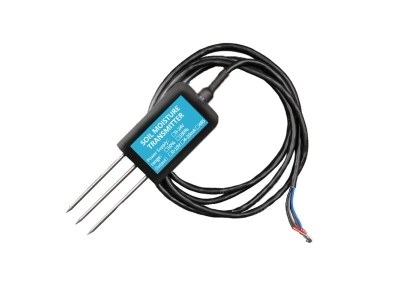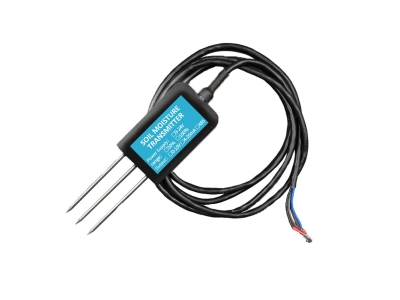Agriculture is increasingly relying on technology to increase yields, optimize resource utilization, and reduce costs. Precision farming is one such technology that uses data-driven farming practices to improve crop quality and productivity. At the forefront of precision farming is soil sensing technology, which provides farmers with real-time data on soil conditions, such as moisture, temperature, pH level, and nutrient content. This article discusses how soil sensors work, their benefits, challenges, and future prospects in agriculture.
What are Soil Sensors?

Soil sensors are devices used to measure soil characteristics at various depths. They consist of probes inserted into the ground, which collect information on a range of soil properties. The probes send the data to a connected system that processes it and presents it to farmers using visualizations or alerts. Some sensors include the ability to automatically control irrigation or fertilization systems based on the collected data.
There are different types of soil sensors, including:
Capacitive sensors: Measure soil moisture using electrical capacitance between soil particles.
Tensiometers: Measure the suction force required to extract water from soil.
Spectroscopy sensors: Analyze spectral reflectance of soil to determine nutrient content and quality.
Thermistor sensors: Measure soil temperature changes for detecting freeze-thaw cycles or establishing planting times.
Each sensor type provides unique insights into specific soil characteristics, helping farmers make informed decisions about crop management.
Benefits of Soil Sensors
Soil sensors have numerous benefits for farmers, including:
Improved Plant Growth: Yield improvement by using soil sensors to optimize water, fertilizer and nutrients application.
Enhanced Resource Utilization: Farmers reduce water use and other resources due to precise irrigation & fertilization to optimize crop growth, decreasing input cost and environmental impact.
Increased Efficiency: Soil sensors greatly reduce the necessity for manual labor and enable remotely commanding and controlling irrigation & fertilization systems from a smartphone or computer.
Reduced Production Costs: Precision farming practices offer cost reduction through minimized inputs of water, fertilizers and labor while maintaining crop yields.
Prevention of Soil Degradation: Soil sensors can detect changes in soil quality and nutrient levels which means that corrective action can be taken before soil degradation occurs.
Challenges of Soil Sensors
Soil sensing technology also presents certain challenges that impact its ability to provide accurate information consistently.
Sensor Calibration: The accuracy of data provided by soil sensors requires frequent calibration for precise agricultural management because the sensors respond differently to different soil types.
Cost: Soil sensors' initial deployment & maintenance costs can be high, impacting farmers' decisions regarding investments in precision farming technologies
Variability in field properties: Soil properties within a field are highly variable, and it may be difficult to get an accurate picture of soil conditions across an entire growing area.
Future Prospects
While some farmers may find adopting soil sensor technology costly or limiting, continued innovation in this technology will make it accessible to more farms. These increments in innovation include:
Advancements in Automation: Continued improvements have resulted in automated systems using soil sensing data, and app-based operation capabilities, easy-deployment innovations, online community support forums, and user manuals guidebooks will vastly increase their implementation.
Artificial Intelligence & Remote Sensing Techniques: Incorporating machine learning & artificial intelligence models with remotely sensed data has shown potential to improve prediction abilities and provide more accurate readings for remote areas.
More Cost-Effective Solutions: As soil-sensing technology continues to develop, they will become more convenient and affordable with the capacity for data sharing and low-cost alternatives.
Conclusion
Precision farming technology is transforming agriculture, and soil sensors are at the forefront of these innovations. By allowing farmers to monitor soil conditions in real-time, soil sensors help optimize resource utilization, increase crop yields, and promote environmental sustainability. While there are challenges to using the technology, soil sensors' future is promising as new technologies improve the accuracy and accessibility of data collection to benefit more farmers in the world. The rise of precision farming driven by soil sensors will indeed impact globalization positively with improved food production and supply chain management.






